From matchmaking lotteries to commercial juggernaut: The evolution of Valentine's Day
Stacker used historical and news sources to trace the evolution of Valentine's Day from a pagan festival to one of today's most commercialized holidays.
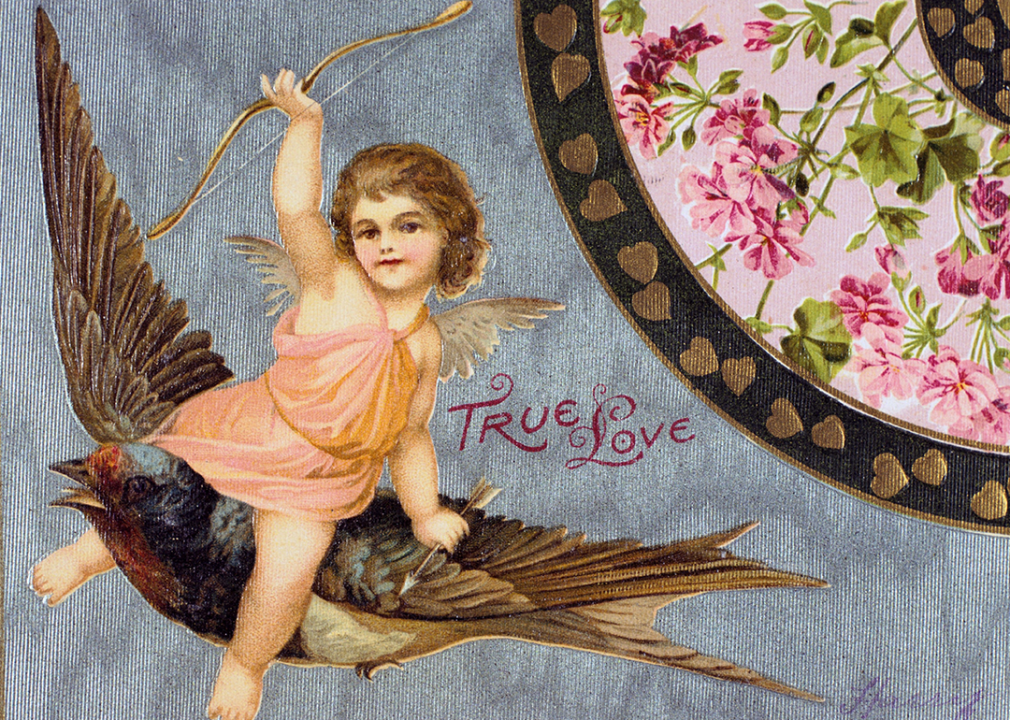
Being someone's Valentine used to involve far more than a one-day commitment and receiving chocolates. Before the 18th century, it was often a yearlong role that could lead to marriage.
The origins of Valentine's Day are a little complicated. It may have started as a pagan festival of fertility that occurred in February or May—and there actually isn't just one but at least two Saint Valentines. Rather than celebrate romance, it originally celebrated the start of spring. Gradually, especially due to the spread of Christianity and the introduction of mass paper production during the Industrial Age, cultural and commercial traditions collided to make the holiday evolve into what we recognize now.
The evolution of Valentine's Day also tells the story of many societal changes as well, from the effects of industrialization (which enabled the widespread printing of cards and commercialization) to shifting ideas of romance and courtship to economics shifts (which introduced a new middle class and transformed the motivations behind marriage).
Today, Valentine's Day continues to reflect constantly morphing values in how society views romantic relationships. It's been criticized for focusing too narrowly on heterosexuality; praised for presenting an opportunity to recognize many different kinds of love; and expanded to include celebrations of friendship, family, and singledom.
Stacker used historical and news sources from the University of Nevada, Las Vegas and Big Think to outline how Valentine's Day has evolved from a pagan festival to one of today's most commercialized holidays.
Ancient Roman beginnings of Valentine's Day: Lupercalia
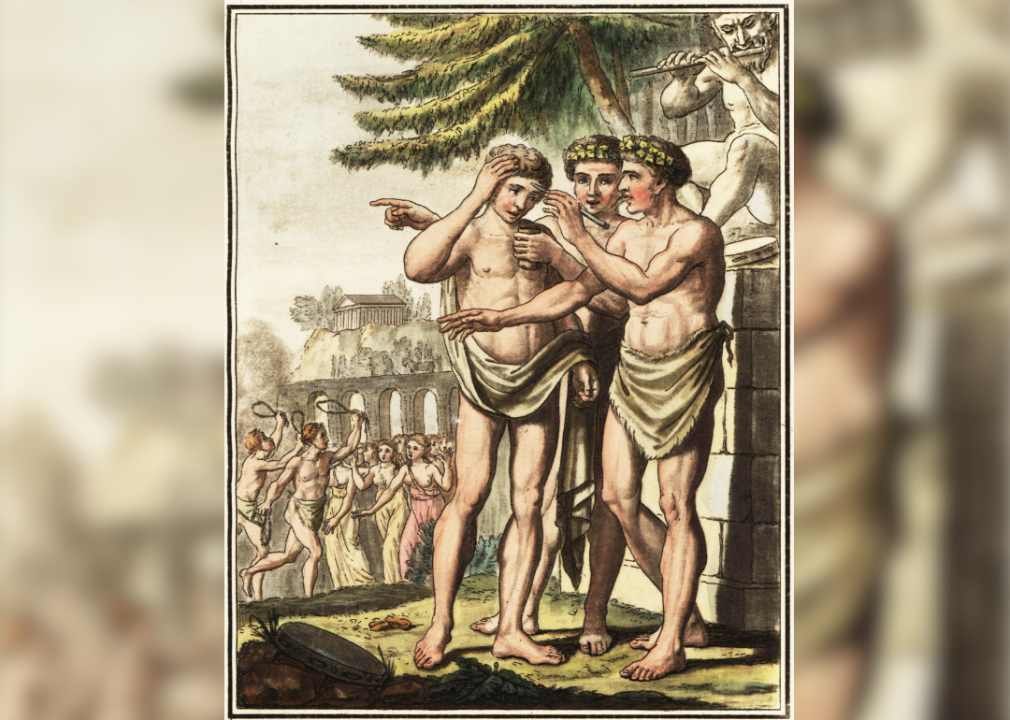
It is thought that Valentine's Day as we know it originated in an ancient Roman feast, Lupercalia, which was celebrated from Feb. 13 to 15. The feast centered around fertility, utilizing some surprising rituals.
Amid a whole lot of nudity and drunkenness, men would kill a goat and a dog. They would then use the skins of their sacrifices to whip young women. Far from being hesitant, women were eager to be hit, believing it would increase their fertility. The festival also supposedly culminated in a "matchmaking lottery" with young men drawing women's names from a jar, though some academics have contested this idea.
Notably, at the time, February marked the onset of spring, which would make sense for a festival associated with fertility and the arrival of new life.
The emergence of Saint Valentine's Day
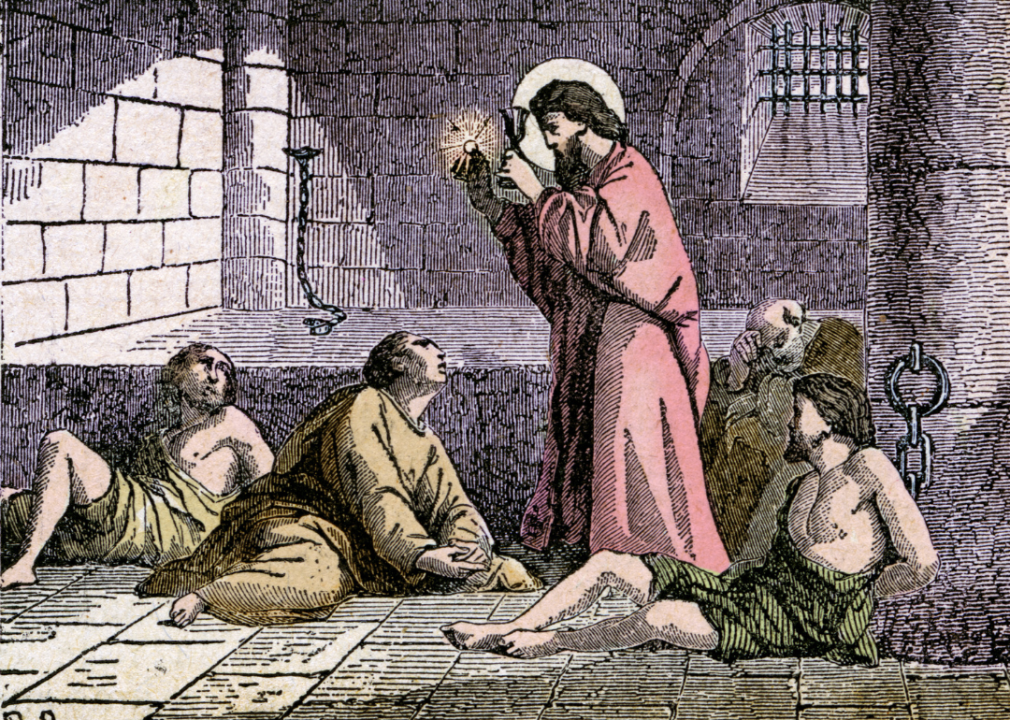
Once Christianity became widespread throughout the Roman Empire and beyond, it was not uncommon for the church to blend long-held pagan rituals with the lore of saints to allow people to keep celebrating them without being blasphemous. It is thought that this was how the historically unlikely but widely recognized story of Saint Valentine became intertwined: the legend posited that in the 5th century, while Saint Valentine was jailed, the daughter of the jailkeeper snuck him food, to which he responded with notes of thanks signed "From your Valentine."
In reality, Saint Valentine was likely not just one figure but the composite of two separate men named Valentine, whom Emperor Claudius II executed in the third century. Some even say there were three Valentines in that period.
In 496 A.D., Pope Gelasius I chose to combine Lupercalia's commemoration of fertility with a day marked to commemorate these martyrs, and Saint Valentine's Day was introduced. As Benedictine monks traveled and spread Christianity, Valentine's Day also gained recognition in England and France.
The Middle Ages and beyond: Shakespeare and Chaucer help romanticize Valentine's Day
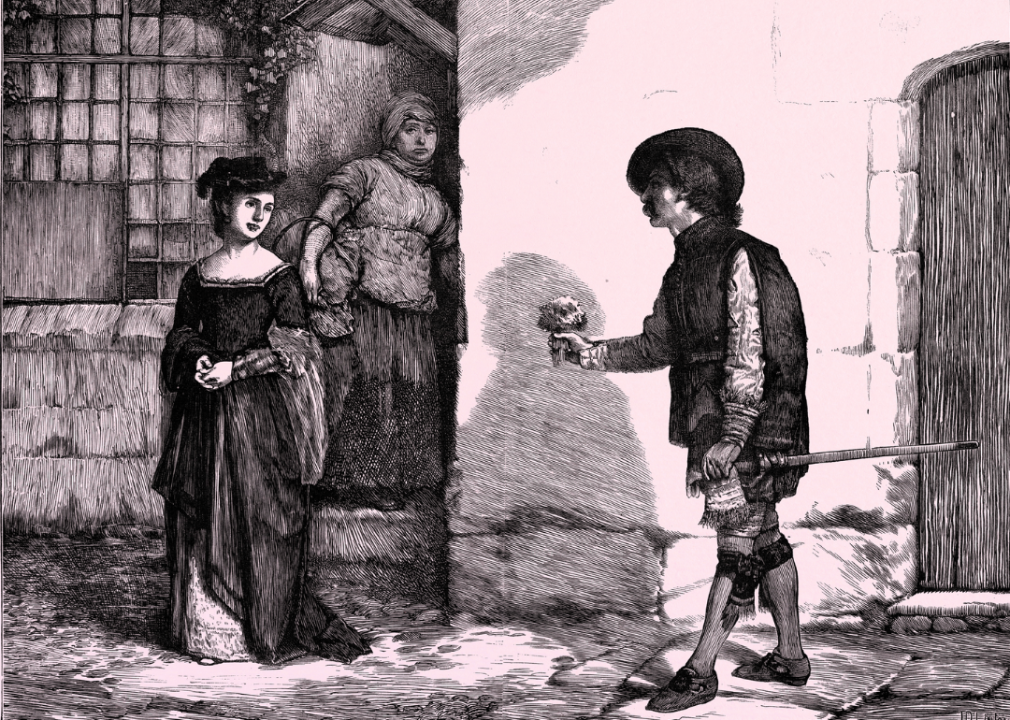
By the Middle Ages, Valentine's Day became more firmly associated with love and romance, thanks largely to the cultural influence of two literary forces. In his poem "Parliament of Fowls," Geoffrey Chaucer ponders the natural way love blossoms rather than be a politically arranged alliance.
In "The Canterbury Tales," Chaucer noted Valentine's Day as taking place in May and being associated with the onset of the new blooms of spring (which is logical, considering the holiday's roots as a celebration of fertility). Chaucer was one of the first to directly link Valentine's Day with popular notions of courtly love, according to Jack B. Oruch, a University of Kansas professor who died in 2013.
Shakespeare further strengthened the romantic characterization of Valentine's Day by including it in his play "A Midsummer Night's Dream." In it, he ushered in Valentine's Day's most recognizable mascot, Cupid, in writing: "Love looks not with the eyes, but with the mind / And therefore is winged Cupid painted blind."
How the Industrial Age turned Valentine's Day into a commodity
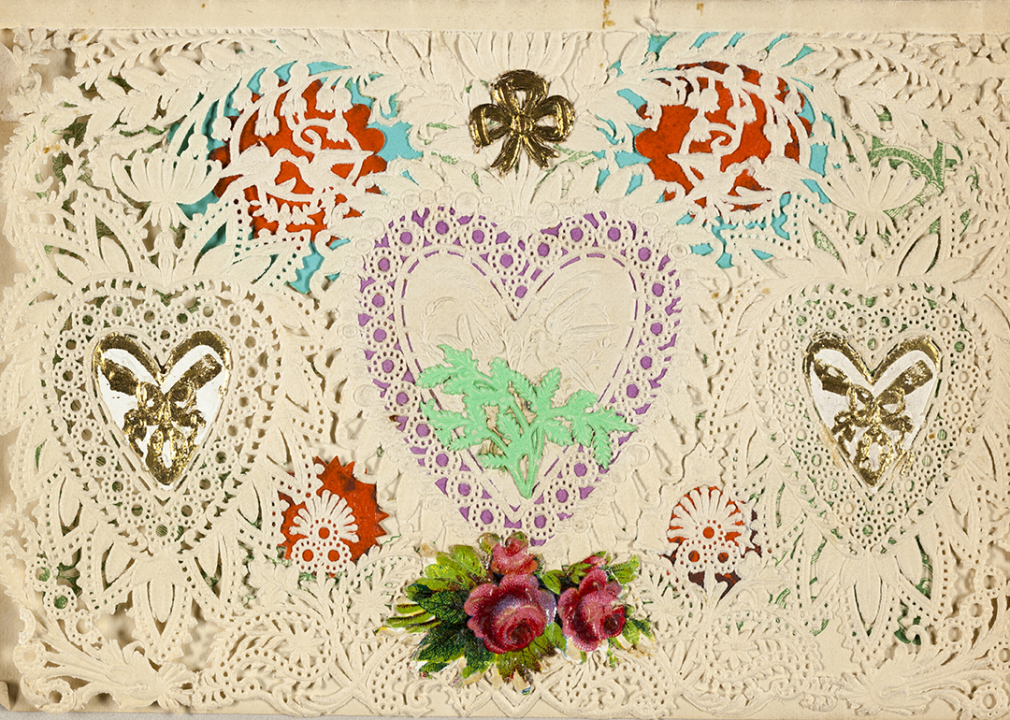
Until the 1700s, Valentine's Day was centered around gift exchanging in much the same way Christmas is today (popular choices included spoons and gloves). At the time, being someone's Valentine was much more than a one-day commitment: it was often a role taken on for the entire year to follow, sometimes leading to marriage.
The onset of the Industrial Age in the 1840s, however, transformed the holiday by making it far more frivolous. The boom in increased paper production made it cheaper and quicker to mass-print pre-designed cards.
Consumers could purchase ready-made cards or design their own, using elaborate combinations of lace, bows, ribbons, seeds, gold-and-silver foil, silk flowers, and other stationery pieces. Some cards took a less Victorian and more risqué tone, including jokes and rhymes made from sexual innuendos.
An early pioneer in mass-produced Valentine's cards was Esther Howland, who began selling the mementos out of her Massachusetts home in the 1850s. Howland's business soared in popularity, exemplifying the economic lucrativeness of Valentine's Day.
Valentine's Day in a modern age
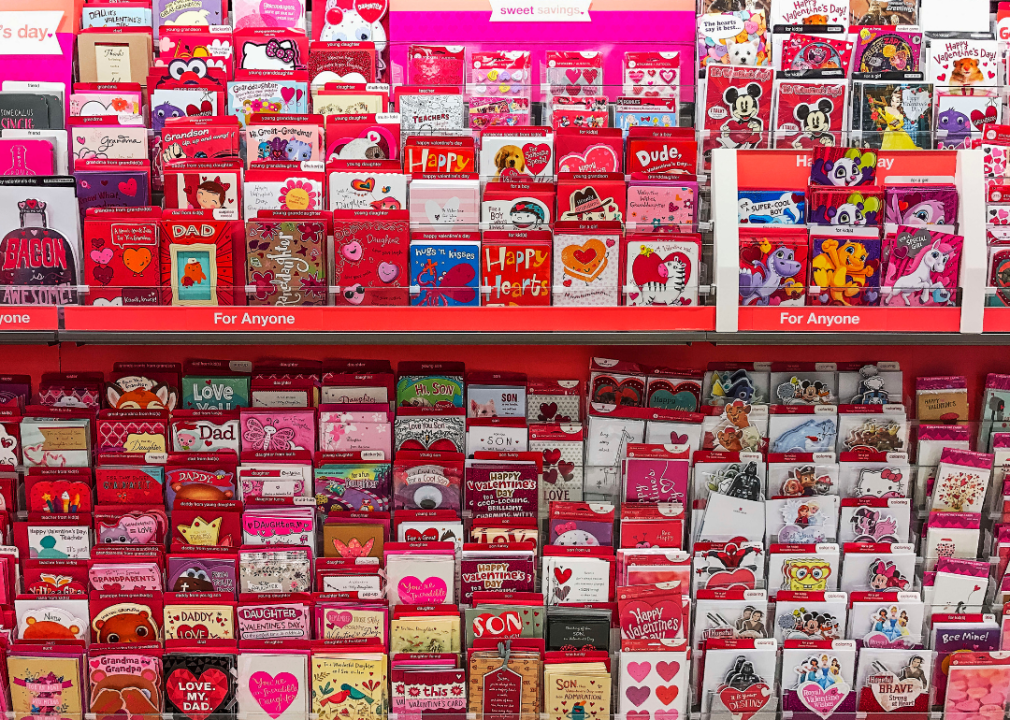
The mass commercialization of Valentine's Day is associated with one brand perhaps more than any other: Hallmark.
The company was founded in 1910 and started mass-producing Valentine's cards in 1913, offering more textures and selling them at even lower prices. They paired production with marketing the holiday to new audiences, notably shifting it from a serious, adult-centered celebration to one in which elementary school students could competitively collect cards in school. Besides cards, commercialization encouraged Valentine's revelers to purchase chocolate, flowers, and jewelry around Feb. 14.
In 2023, the National Retail Federation and Prosper Insights & Analytics expected people to spend $25.9 billion for the holiday, an increase of 8% from 2022.
While the commercial prospects of Valentine's Day expanded, so, too, did the ideals it promoted: the newly emerging middle class helped reconsider the idea of marriage as strictly economic and incorporate romantic love, furthering the prospects for Valentine's celebrations.
Valentine's Day continues to evolve in contemporary celebrations alongside broader, more inclusive ideas of love and relationships, including celebrations such as Galentine's Day and Singles Awareness Day, and focusing on platonic love and friendship.
Story editing by Carren Jao. Copy editing by Paris Close.






